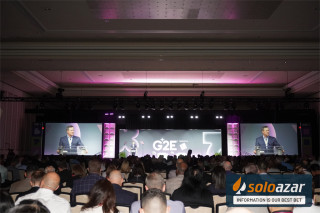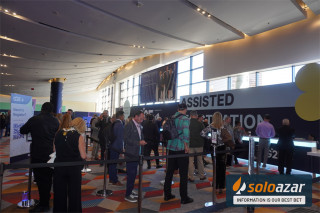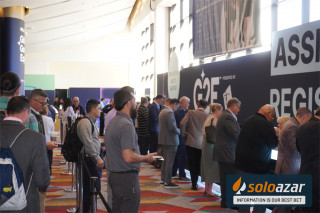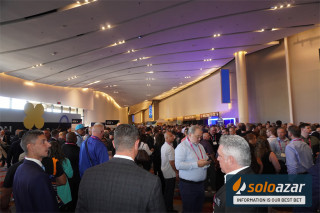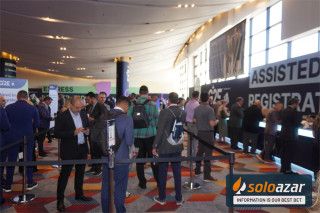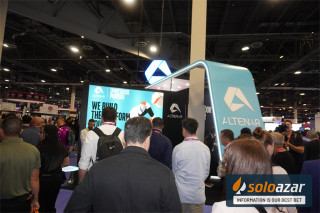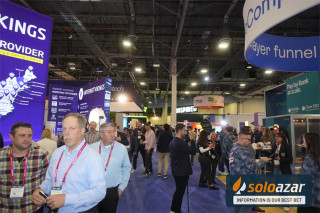Spain’s iGaming Growth Faces Offshore Surge Amidst Low Online Penetration – Key Insights from Gaming in Spain 2025
Tuesday 08 de July 2025 / 12:00
2 minutos de lectura
(Madrid, SoloAzar Exclusive).- At Gaming in Spain Conference, Ed Birkin of H2 Gambling Capital, unveiled revealing stats on the country’s online gambling ecosystem. Despite solid onshore growth, offshore platforms are outpacing the legal market, keeping digital penetration at just 23%. Birkin warns: Spain lags behind comparable markets, with regulatory hurdles slowing full transition. Dive into the full breakdown and what it means for operators and policymakers.
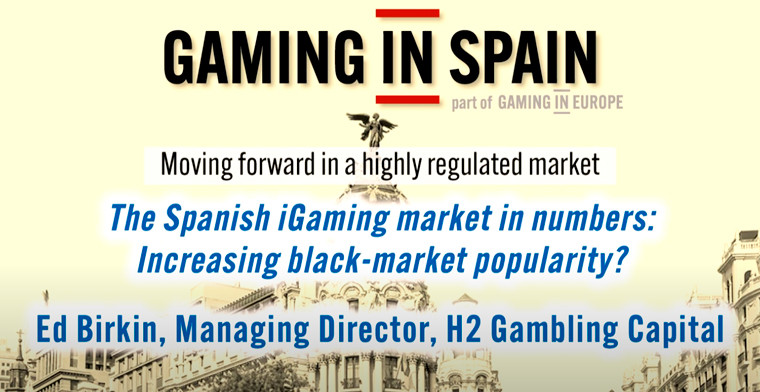
First of all, the Managing Director explained H2 Gambling Capital activities. “At H2 Gambling Capital, we have gambling data turnover and revenue on 150 markets. We cover 100 gambling operators and suppliers with news and financial models. We’ve just launched monthly operator market share tracking, as well as looking at monthly legal and illegal markets. We have live market reports and we have bespoke consultancy. So we’ll be focusing on the top one today.
Spanish online gambling in numbers
He estimates that the total market in Spain including lottery is 12.3 B euros this year.
The land-based gambling market continues to dominate, so that’s over 80% of GGR is still on land-based. “We expect the total online market to be the one that is showing the most growth”, he affirmed.
“If you look at just betting and gaming and exclude lottery from this, which has a very low online penetration, then the betting and gaming market still only has 23% of the market online and we believe that the recent growth that’s been shown has been predominantly driven by a shift from land based to online rather than any significant expansion of the overall gambling market in Spain”.
Given the low online penetration, this is going to be the key driver for the online market going forward, he pointed out. “If you look at Spain compared to other markets, such as the Nordics, where you have high levels of digital penetration, all the way down to Germany, which just has a complete mess of a market and therefore has a low online penetration. But other ones, if you are looking probably comparable around Netherlands, Italy, particularly comparable because they also have a very large land-based gaming market and it is very much still a cash economy. You can still see that Spain has a long way to go for future growth of online penetration.”
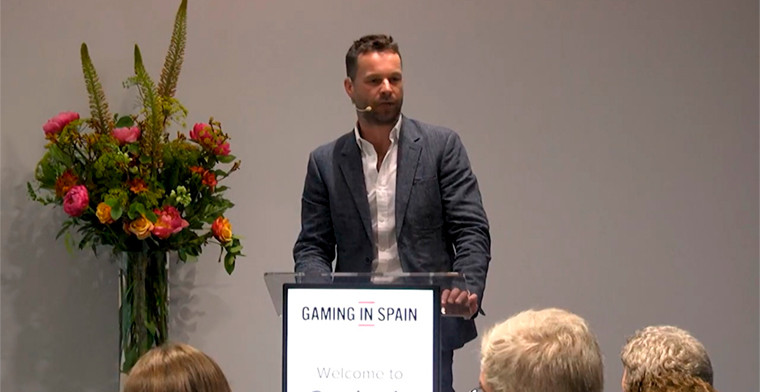
Onshore and offshore gaming markets
The onshore market has grown and is still growing strongly, Birkin added, and assured that it has grown 65% in the past three years and 48% in the past two years.
“Despite this, the offshore market has actually grown faster. Especially in the last couple of years, crypto casinos have been particularly popular. So, the onshore channelization has actually fallen slightly from 79% on our estimates to 77% this year. And we have the onshore market continuing to grow, albeit at a lower rate. So we are expecting the channelization. So this is how much of the GGR is through onshore licensed operators, non-locally licensed operators versus non-locally licensed operators. And we expect the chanellization to stay roughly in the kind of 77% to 79% onshore.
Compared to other markets, it’s not actually a bad level. We think there’s still upside. We hope that most regulators will look to get this above 90%. A 100% is impossible. Finland only has the monopoly. They are going to be opening up the market. So that is why it is a very low onshore channelization. German regulations are unfriendly to onshore operators and this is not particularly helpful.
Netherlands has a big issue with deposit limits and adverse regulations, which has meant that half market has moved to offshore. So really, it’s probably fair to compare them with someone like Sweden, and as you can see, actually Spain is doing slightly better than that. So not a bad performance despite having almost a quarter of the market remaining offshore but still room for movement."
H2 Gambling Capital change in methodology
Spain
“We’ve changed our methodology for getting the offshore estimates, so we look at it in two levels: We look at the activity channelization and then revenue channelization. So first of all we identify all the licensed onshore operators which for markets like Spain in very helpfully on the regulator website and we calculate the activity going through these operators. So we look at web traffic, affiliate traffic and then search data. We don´t look at apps because we still know that over 60, at least through our surveys 60% of revenue at least comes through web whether it’s through desktop or mobile web and we’ve just found any app data to be highly unreliable. So we look at web traffic, affiliate traffic and search data and then we do the same with the offshore operators. So we get affiliate data which tracks about 12,000 different I gaming brands see which are the largest opertors targeting the Spanish market and then do the same search and this will give us an activity split between the onshore and offshore market. However, players who use the offshore market generally tend to spend more than the onshore market. Now, how much more depends on the market in question. If there are deposit limits, then it tends to be people who want to exceed the deposit limits who will go to these markets.
“We also do player surveys and then we’ll look at what the average expenditure multiplier, that’s how we get to a revenue channelization figure. So we’re now tracking the data on a monthly basis. So in Spain January, February, March, April is and our estimates because we are yet to have the Q1 data. And we are tracking the onshore and offshore GGR on a monthly basis.”
Latam markets
Argentina
“We forecast that Argentina will generate 2.8 billion US dollars of online GGR in 2025. Obviously, with the inflation and devaluation of the currency it can change quite quicky. We forecast only 40% of this to be on shore. Some people say 90% of the market is illegal. We don’t think it’s that high. But the main issue in Argentina is the provincial regulation So there are many provinces in which there aren’t any licensed operators or one or two licensed operators. And the only way to get over this is if the smaller provinces were to get regulation that were more aligned with some of the larger provinces like Buenos Aires, then operators will be willing to get a license in those markets. This is equivalent of about 80 dollars per adult 0.4% of GDP.
Brazil
“We’ve just increased our estimates based on the latest tax data to come out of the market. They’re forecast to generate 11 billion dollars of online GDR in 2025. It’s been a substantial jump since the market launched. Ii really started to increase quite significantly once the regulations were announced a couple of years ago but now the market’s launch is more. We forecast 70% of this to be on shore and we’re going to be releasing more detailed data on how we get to that because there is a lot of talk in the market again of the offshore market being much higher. Recent estimates are that 40% or 50% of the market was illegal. We think it’s around 30% based on central bank transaction data. And it’s the equivalent of about $68 per person or 0.5% of GDP.
Colombia
“In Colombia, which has been regulated the longest, they’re forecast to generate $1.2, $2 billion of onlinw GGR this year and 67% of this is forecast to be on shore. And that is equivalent to $31 dollars or 0.3% of GDP
Mexico
“We estimate the’re going to generate $3 billion of online GGR in 2025 and 83% of this is forecast to be on shore, because you have such a large number one operator there. This is equivalent of $33 US or only 0,2% of GDP.
Peru
“Peru just regulated last year. We’ve just received our first bit of split tax data. We’re expected to generate a billion dollars of online GGR this year and almost 70% of this on shore, which again is around 35 dollars or 0.3% of GDP.
How does this compare to Spain?
Spain is by far the lowest online spend as percentage of GDP compared to any of the other countries we have just mentioned. And this is further evidence of the underpenetration of this online market that we talked about before.
Argentina and Brazil both have a higher spend per adult in US dollars, but actually Spain does have the highest onshore channelization compared to the markets with the exception of Mexico where there is very light touch regulation and also onshore operating.
Why are players playing offshore?
First, we split our survey data into four different categories because talking about an average online gambling player is just pointless. 88% of revenues are generated by 15% of the players.
What are the players’ preferences?
The market is more skewed to high value players than out survey suggests. For example, in UK, the top 1% of players are 25% of GGR and the top 5% is 60%.Top 1% is 43%.
Spain’s iGaming sector stands at a crossroads—buoyed by rising demand but dragged down by complex regulatory barriers and stubborn land-based dominance. With global comparisons placing Spain among the least digitally engaged, the push for streamlined regulations and higher onshore channelization is more vital than ever.
The conversation sparked at Gaming in Spain 2025 suggests that future growth will hinge not only on consumer behavior but also on strategic policy adaptation. Now, the industry watches to see which direction the regulators—and the players—will take.
Watch the full conference here:
Categoría:Events
Tags: Gaming in Spain,
País: Spain
Región: EMEA
Event
G2E - Las Vegas 2025
06 de October 2025
Korbi Carrison on 25 Years of G2E: "It’s crucial to stay ahead of trends"
(Las Vegas, SoloAzar Exclusive).- In this interview, Korbi Carrison, Event Vice President of G2E at RX USA, reflects on the success of G2E’s 25th anniversary edition in Las Vegas, sharing insights on the event’s evolution, key highlights, and what this landmark celebration means for the future of the gaming industry.
Tuesday 04 Nov 2025 / 12:00
CT Interactive on Innovation, Networking, and Market Growth at G2E 2025
(Las Vegas, SoloAzar Exclusive).- The global gaming industry marked G2E’s 25th anniversary with a major gathering in Las Vegas. CT Interactive stood out for its innovative product development and international growth strategy. Account Manager LATAM at CT Interactive, Roberto Muñoz, shared insights on G2E’s importance, emerging trends, and the company’s collaborative expansion efforts.
Thursday 30 Oct 2025 / 12:00
Atlaslive Explored the Future of Gaming in Latin America at Recent G2E 2025
(Las Vegas, SoloAzar Exclusive).- Bruno Almeida, Head of Sales LATAM at Atlaslive, attended G2E for the first time to explore how land-based and online gaming are converging. His experience highlighted key trends shaping the Latin American market, from immersive casino innovations to strategic networking and regulatory insights.
Monday 27 Oct 2025 / 12:00
SUSCRIBIRSE
Para suscribirse a nuestro newsletter, complete sus datos
Reciba todo el contenido más reciente en su correo electrónico varias veces al mes.



















